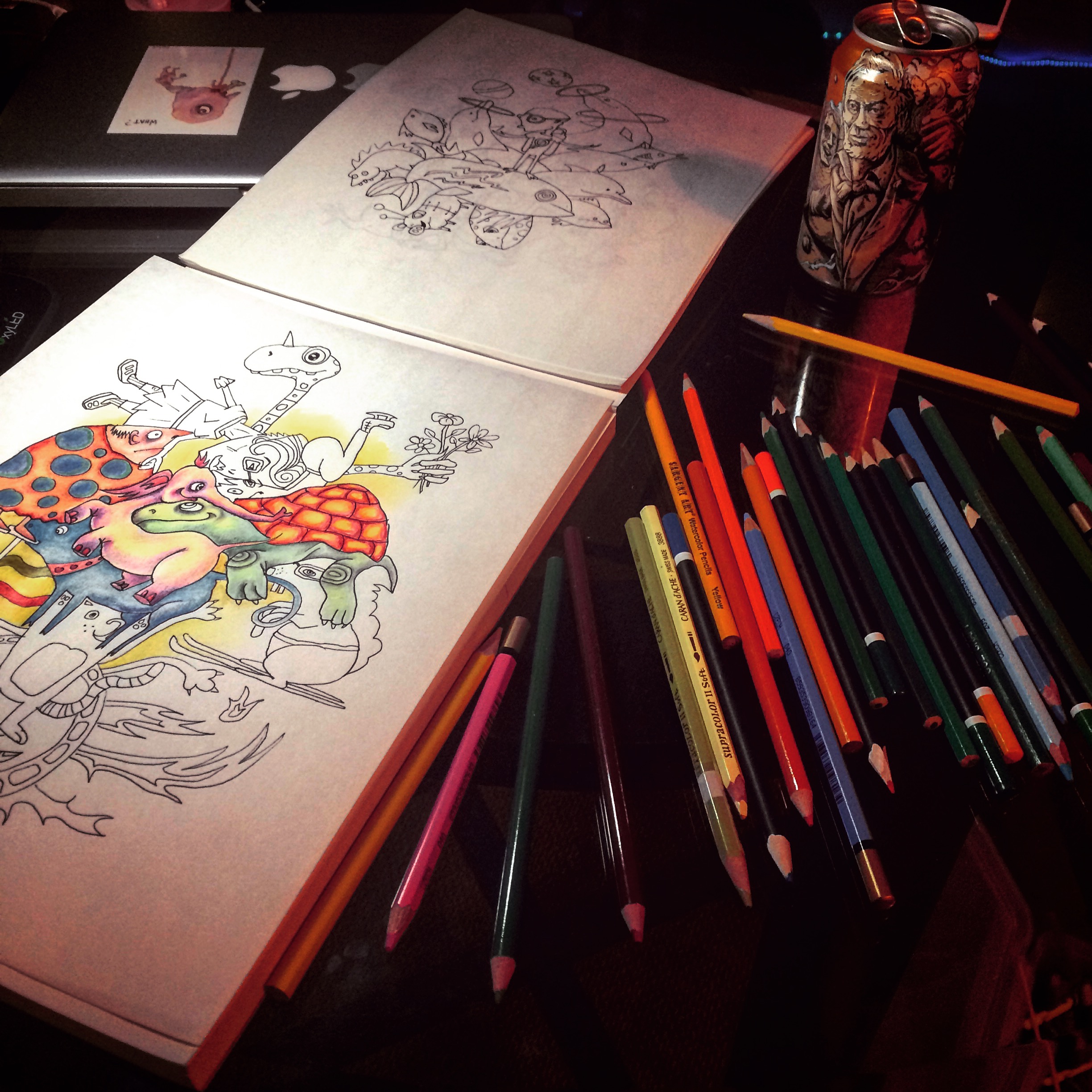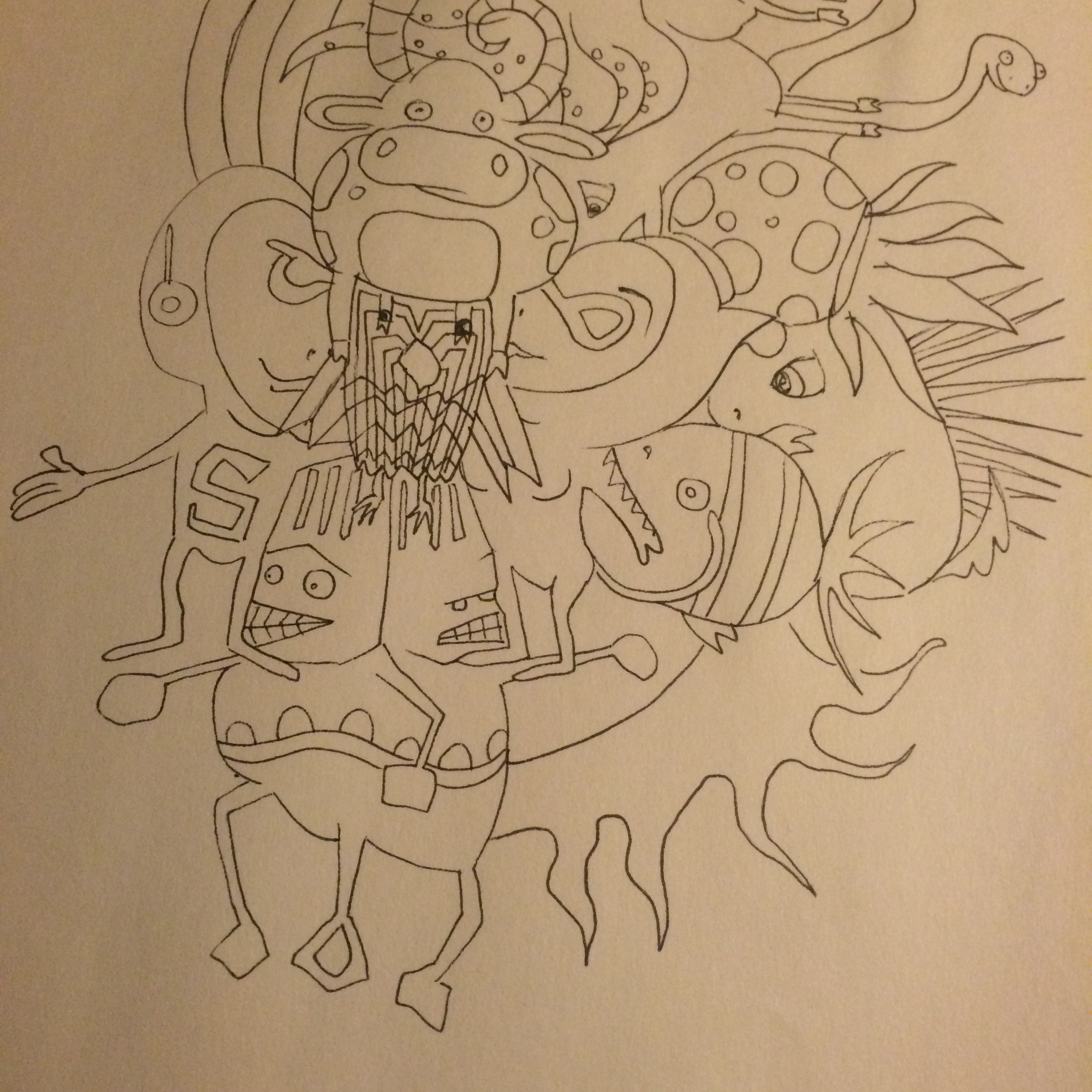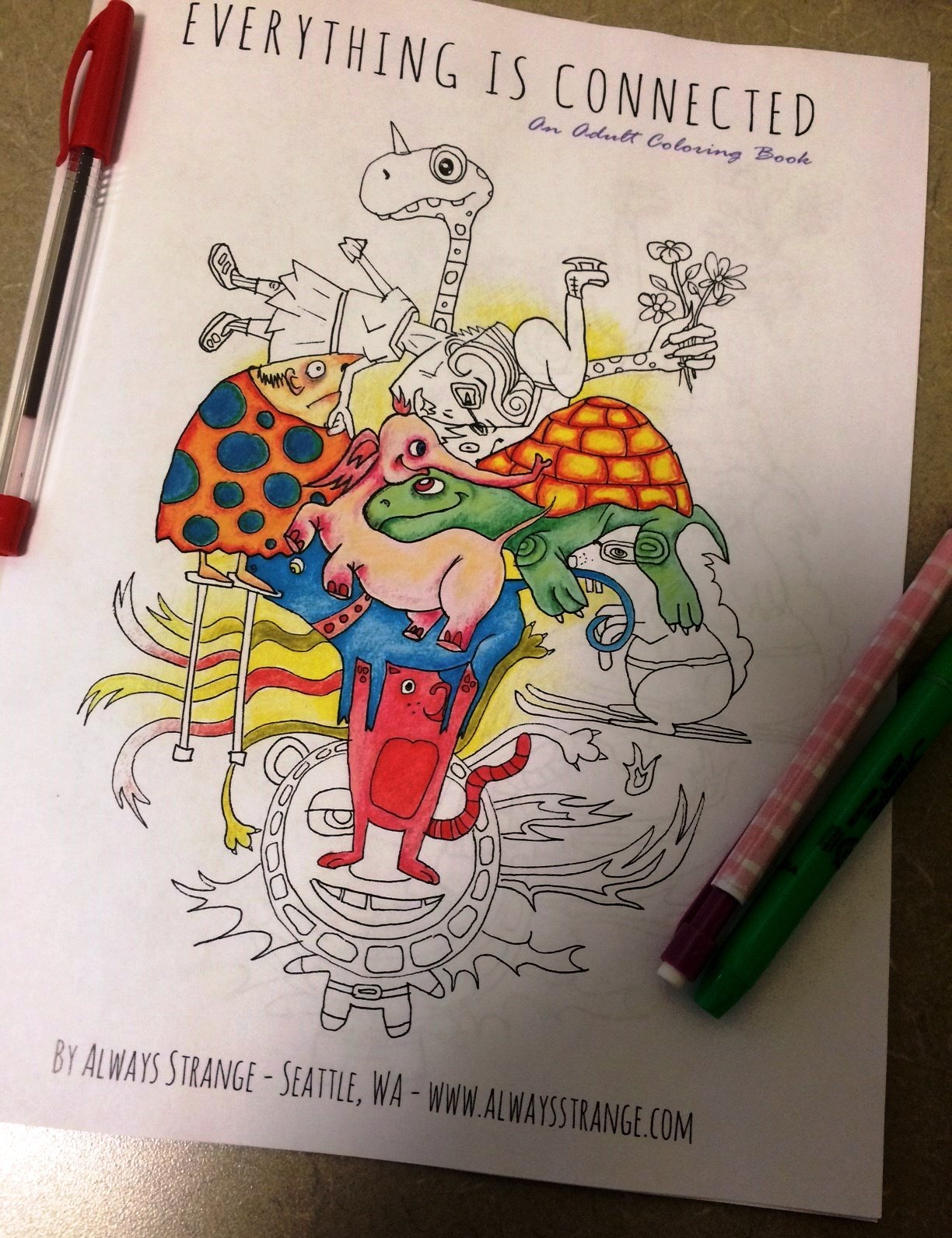In one of my previous posts I opened up a conversation about combining art with science - two of the things I spend a lot of my time on and quite enjoy. In this post I'll reveal the details of a commission piece I did last year for another scientific journal and this time it involved a lot more creativity and was great fun to make.
Final drawing!
A few years back, when I suddenly decided to move to New York City, I started working in a tissue engineering lab at Columbia to help pay for grad school. It was a fantastic lab to work in, first as a laboratory manager and then their administrative coordinator. I was surrounded by a large and multidisciplinary group of bright young researchers excited to add to the existing knowledge about heart and bone tissue engineering and create novel biomedical solutions to damaged hearts/cardiovascular systems and bone deformities. They were all about combining two seemingly separate disciplines (engineering and biology) in a way that propelled the field forward at lightening speed. Recently, this lab generated a startup company for bone engineering. Aside from being completely enthralled with what seemed like science fiction just years prior this lab's environment really spoke to my love and passion for combining anatomy/physiology with art. I couldn't be happier when one lab member reached out to me a few years later asking to collaborate on a creative illustration for her most recent research publication about Ewing's Sarcoma in a multidisciplinary journal Theranostics. In this journal link you'll see that our collaborative illustration project (and her publication) appear halfway down the page.
In order to get this creative project off the ground we first connected over email due to me being in Seattle and the research team in New York City. We exchanged initial ideas and jointly came up with a concept, drawing from cultural references in Star Wars, The Jetsons and Miyazaki's incredible animated films. Then I got to work on an initial sketch. Both of us really wanted this to succeed so we had plenty of back and forth communication, which slowly helped structure this process.
The initial idea centered around an island city or a world with various structures and functions within it. The world itself represents the cell or a complex multi-functional entity that has a lot of activity within it. The space ships are the transport vesicles, inside which there are little creatures that can direct cargo inside the ship away from the world and invade other worlds with it. All of this is an artistic representation of what happens on a cellular level, particularly when it comes to cancer cells and signaling between cells.
Rough sketch of the city-island world
One of the initial idea sketches
A snippet of the final illustration



